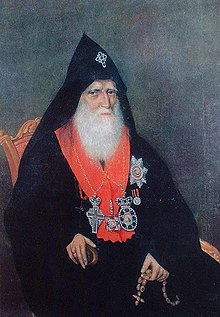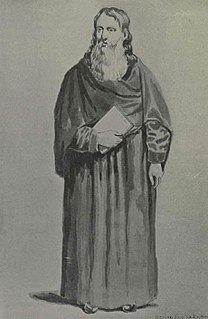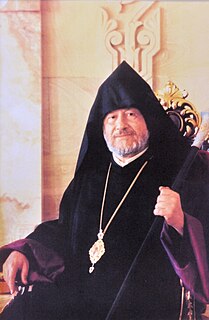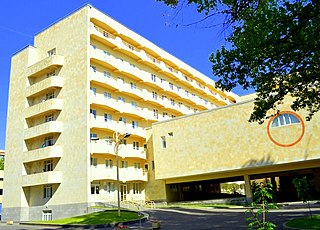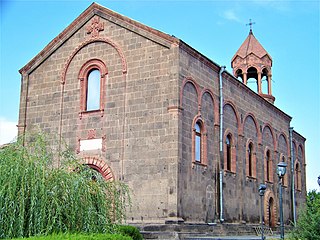- There was also a Caucasian Albanian anti-Catholicos Nerses V , who ruled in 1706–1736.
This article may be expanded with text translated from the corresponding article in Armenian. (October 2012)Click [show] for important translation instructions.
|
| His Holiness Nerses V Supreme Patriarch and Catholicos of All Armenians | |
|---|---|
Nerses V Ashtaraketsi, by H. Hovnatanian. | |
| Church | Armenian Apostolic Church |
| See | Mother See of Holy Etchmiadzin |
| Installed | 1843 |
| Term ended | 1857 |
| Predecessor | John VIII |
| Successor | Matthew I |
| Personal details | |
| Birth name | Toros Harutyuni Shahazizyan (Թորոս Հարությունի Շահազիզյան) |
| Born | 1770 Ashtarak |
| Died | February 13, 1857 (age 86) Ejmiatsin, Armenia |
| Buried | Mother Cathedral of Holy Etchmiadzin |
| Nationality | Armenian |
Nerses V (Armenian : Ներսես Ե Աշտարակեցի, Armenian pronunciation: [nɛɾsɛs jɛ aʃtaɾakɛtsʰi] ) (1770 – February 13, 1857), served as the Catholicos of the Armenian Apostolic Church between 1843 and 1857. Previously, he served as the leader of Diocese of Georgia from 1811 to 1830, the leader of the Diocese of Bessarabia and Nor Nakhichevan from 1830 to 1843.
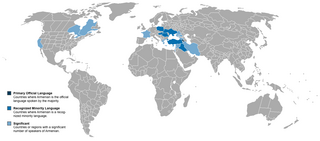
The Armenian language is an Indo-European language spoken primarily by Armenians. It is the official language of Armenia. Historically being spoken throughout the Armenian Highlands, today, Armenian is widely spoken throughout the Armenian diaspora. Armenian is written in its own writing system, the Armenian alphabet, introduced in 405 AD by Mesrop Mashtots.
Catholicos, plural Catholicoi, is a title used for the head of certain churches in some Eastern Christian traditions. The title implies autocephaly and in some cases it is the title of the head of an autonomous church. The word comes from ancient Greek καθολικός, pl. καθολικοί, derived from καθ' ὅλου from κατά and ὅλος, meaning "concerning the whole, universal, general"; it originally designated a financial or civil office in the Roman Empire. The name of the Catholic Church comes from the same word.

The Armenian Apostolic Church is the national church of the Armenian people. Part of Oriental Orthodoxy, it is one of the most ancient Christian communities. The Kingdom of Armenia was the first state to adopt Christianity as its official religion under the rule of King Tiridates in the early 4th century. The church originated in the missions of Apostles Bartholomew and Thaddeus in the 1st century, according to tradition.
Contents
Nerses V is buried near Mother Cathedral of Holy Etchmiadzin.

Etchmiadzin Cathedral is the mother church of the Armenian Apostolic Church, located in the city of Vagharshapat (Etchmiadzin), Armenia. According to scholars it was the first cathedral built in ancient Armenia, and is considered the oldest cathedral in the world.
